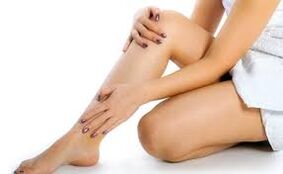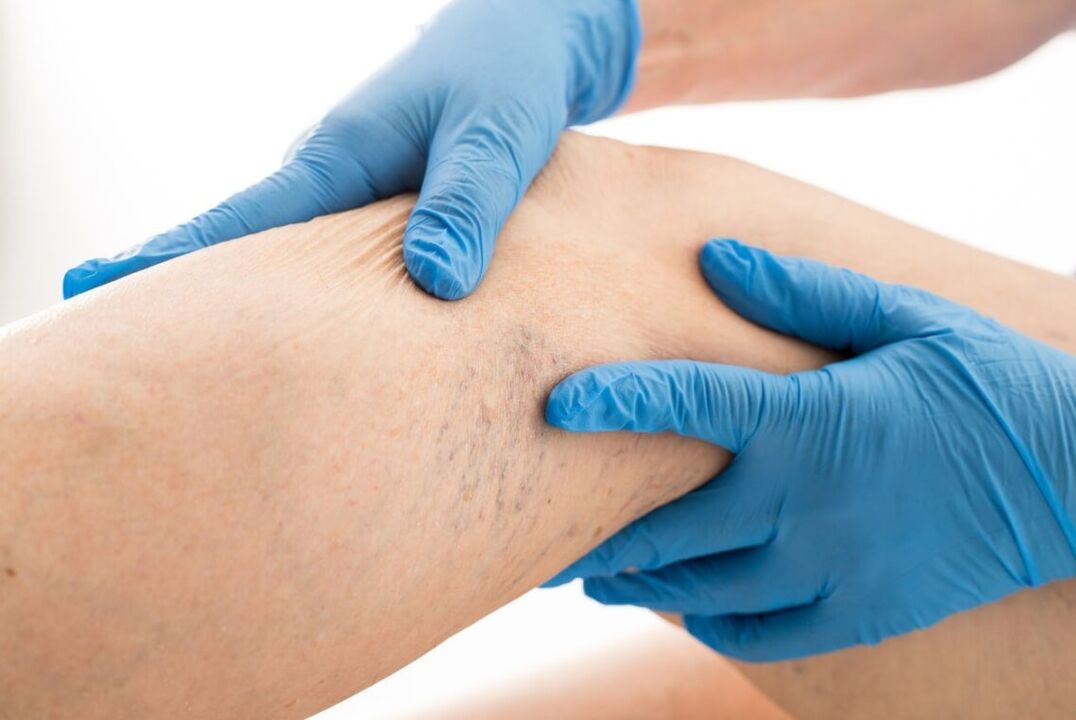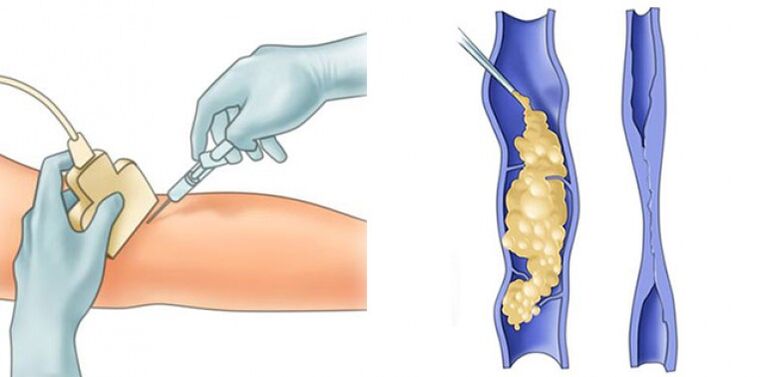Risk factors for the development of varicose veins
- Genetic.
- Traditionally, pregnancy has been considered one of the main risk factors for varicose vein development, causing more frequent damage to women (3-4 times).
- Obesity is a de facto risk factor for varicose veins.At the same time, increasing the body mass index to 27 kg/m2 and above will lead to a 33% increase in the frequency of disease.
- Lifestyle has a significant impact on the development and process of varicose veins.In particular, the adverse effects of prolonged static loading have been demonstrated
- During the varicose veins, tight underwear, various corsets that increase intra-abdominal pressure have adverse reactions.
- The high frequency of varicose veins in industrialized countries is to some extent caused by nutritional characteristics.High food processing and a decrease in the original vegetable and fruit diet lead to a persistent lack of static plant fiber to reshape the venous walls and chronic constipation, which can lead to permanent increase in intraperitoneal pressure.
- Dishwashing fluid conditions are related to the pathogenesis of varicose veins.In recent years, their role has gradually increased due to the widespread use of hormone contraceptives, the popularity of hormone replacement therapy during menopause, and the treatment of osteoporosis.It turns out that estrogen and progesterone and their derivatives reduce the tone of the venous walls due to the gradual destruction of collagen and elastin fibers.

Clinical pictures of varicose veins
Varicose veins- This is a disease that is not important to beautiful sexual behavior.On average, female veins have three times more varicose veins than males.
Signs of varicose veins- Subcutaneous veins, pain, leg pain, swelling of feet and lower legs, fatigue of legs.Varicose veins lymph nodes are usually prone to blood clots and infection.Inflammation of veins or blood vessels may occurPlatelet mass- Complex vascular inflammation of blood clots.During the venous process, there are difficult, very painful ropes.The skin changes, loses its elasticity, and becomes denser in color, dark brown.Because of the risk of injury, ulcers can occur.A young woman can become a disabled person at the age of 40.
One of the serious complications of varicose veins is thrombotic varicose veins - in this process, a subsequent inflammatory thrombus forms on the inner lining of the vein.This pathology is dangerous because blood clots may flow into the pulmonary artery with blood flow (TEL-pulmonary thromboembolism) and cause a person to die.This is why varicose veins are a dangerous disease that must be accepted.
Symptoms of varicose veins (these symptoms should keep you on your mind):
1.pain.
There are many causes of varicose veins.Various pains of varicose veins are also very rich:
- Heat pulsation pain,
- Night cramps and itching in the muscles,
- Pain while walking
- Vein trunk pain,
- General pain and lymar of the legs
2.Swelling of legs.
3.Feelings of leg bursts and severity.
4.Skin changes.At first, the skin dries and pigmentation occurs - the skin on the legs becomes darker and covered with brown "spots".Later, various dermatitis, eczema, and SO are known as nutritional diseases that heal until the formation of ulcers may add these symptoms.
5.A tortuous, elongated varicose veins that protrude above the skin surface of the legs and feet and have a cylindrical or mixed extension.
6.Blood vessel star (telangioectasia).Yes, patients with varicose veins also include patients with swelling veins because the reasons for their appearance are the same.
The earliest stages of varicose development are difficult to detect and diagnose because in the early stages of the disease, there is no major feature - varicose veins.In the initial stages of arterial disease, the first and earliest varicose veins were also found in the flat feet, lumbar bone and cartilage, such as leg severity, moderate leg pain, and feeling of fatigue.In such difficult circumstances, it is impossible to make the correct diagnosis itself - you will need to consult a doctor or even a few experts - wanderers, neurologists, surgeons and manual therapists.High-precision instrument diagnostic methods (such as ultrasound) are also required.
In hepaticology, this symptom is associated with the onset of pathological blood flow through the deep veins.
Most of the time, women will notice the first sign of varicose veins in spring, when you can change the wardrobe, but it is not clear where the vein "pattern" comes from on the legs, legs and hips.The legs are deformed, turning blue and ugly.
The initial symptoms of varicose veins in the legs, which you can yourself suspect, are an increase in vein patterns on the skin of the legs.As already pointed out, this defect is often what young women point out: on the legs or hips, they notice the wreath, which was not before.
Usually, this symptom of starting varicose veins is preceded by pain and other unpleasant sensations.Usually, the first “discovery” of the vein is definitely not accompanied by an absolutely unpleasant feeling.
Women are only worried that this blood vessel network is a cosmetic defect.Such patients usually turn to specialists just to eliminate cosmetic discomfort.
If your skin is thin and pale, the first symptoms of starting varicose veins are particularly visible.These are thin veins that don't even protrude above the skin surface.The first symptom of varicose veins may also look like a network of thin blue blood vessels beneath the skin.
There may be no other complaints when varicose veins begin.
The development and onset of varicose veins have been manifested as the nodes of varicose veins protruding above the skin surface - one or more.This is the main symptom of starting varicose veins.
Varicocele nodes can be detected most often on the inner surface of the legs or hips.With long walking or long standing, symptoms of this varicose vein such as fatigue, leg severity, show a burst (usually in calves).These symptoms are particularly clearly manifested, staying in a sitting or standing position for a long time.Varicose veins (dilation of veins), convulsions in the calf muscles, especially at night, sometimes even at night, pain or acute pain.The first sign of venous dysfunction is also manifested as swelling in the legs until the end of the day.Edema usually occurs at night, especially after prolonged standing.After resting at night, the swelling completely disappeared.
If you relax, especially when lying down, these symptoms of swelling of varicose veins will pass quickly at first.However, the disappearance or significant decrease of these symptoms after walking and night breaks are characteristic of symptoms of varicose veins.
However, if varicose veins are not involved seriously, they will not retreat.Over time, this symptom of varicose veins appears to be a convincing dark blue intradermal vein that protrudes above the skin surfaces of the legs and feet, similar to clusters of very mature red grapes.All of this is accompanied by pain in the legs and calf, feeling of hot legs, nighttime twitching and swelling of the calf muscles.Gradually, skin changes add these symptoms.At first, the skin dries and turns black, with pigments – brown spots appearing on it.Soon after, the so-called nutritional disease began to be added: poor healing, even ulcers.
The pain begins to disturb more and more, especially in the afternoon or evening.

Treatment of varicose veins
There are many ways to treat varicose veins, but nowadays, the most effective way to treat it is surgical surgery -Resection.Drugs and compression therapy are used as adjunct methods in surgical treatment and as independent methods in the initial stages of varicose veins and contraindications to surgical treatment.
Treatment of varicose veins should be complex and personalized, most often including a combination of conservative and surgical treatment.
Types of surgical treatment for varicose veins:
- Classic vein removal
- Laser blood coagulation
- Combination method
To treat varicose veins, modern medicine uses laser surgery (EVLC).This method involves intravascular laser coagulation.EVLC- Intravascular laser is an advanced method for treating varicose veins.Laser exposure is a process that is in the middle between surgical methods for non-therapeutic treatment of diseases.
dignityEVLC- This is a radical but short-term approach to healing.After such surgery, patients can leave the clinic within a few hours and are in good health.This treatment is performed under operating conditions and local anesthesia.
The most modern laser equipment is currently used.Meanwhile, the patient's problematic area is exposed to a laser with an optimal wavelength (1470 nm).The radial luminescent used provides reliable venous closure.In this case, there are no side effects and the surrounding tissue will not heat up.This is why after such an operation, the number of bruises is reduced and the postoperative period passes easily and painlessly.
The surgery is not accompanied by cutting and leaves no pigmentation or scarring.Three weeks after the operation, the patient's legs gained a normal appearance without varicose veins.This treatment of varicose veins is already common in Western countries.For large varicose veins, EVLC is used in combination with microbone resection.This allows you to get good aesthetic results.

Advantages of using EVLC:
- Quick recovery
- Small trauma
- High cosmetic effect
- Lack of traces on the skin of remote varicose veins
- Treatment is performed under local anesthesia (tumor anesthesia)
- Lack of pain syndrome
- High therapeutic effect
Possible complications
There are few complications when laser technology is used to treat it.Rare complications include burns, the possibility and abnormalities of venous thrombophlebitis in the surgical area.However, experienced hysterical bleedologists guarantee qualitative results.
Such operations do not violate the patient's lifestyle.After the intervention, it is necessary to wear compression socks to cause slight pressure on the veins.Special products are suitable for areas of particularly large varicose subnodes - cotton rollers or latex pads.After laser surgery, patients are advised to take a walk every day.
Treating varicose veins with laser ensures retaining the ability to work and exercise.























